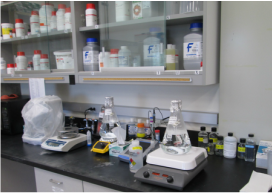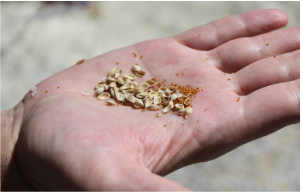|
|
Camelina is a genus in the Brassicaceae, a family which comprises many agronomically valuable crops such as broccoli, mustard, turnips, and rapeseed. It's not clear how many species exist within Camelina; estimates range from 5-10. One species, C. sativa (aka Gold-of-Pleasure and false-flax) has a long history of cultivation as an oil seed crop; I'll herein refer to the crop simply as Camelina. Precariously, the last century has seen Camelina cultivation come to a grinding halt, which has led to the loss of many old cultivars and a reduction in genetic diversity. However, there has been renewed interest in Camelina, but not as a food crop, instead as an aviation biofuel. The high yields and favorable oil composition of Camelina coupled with its ability to grow with minimal inputs and in marginal soils opens opportunities for farmers and aviation industries to reduce their dependence on fossil fuels. Albeit a small group of plants, Camelina has immense potential for us to learn about plant evolution, biotechnology, and crop improvement. Read more about each of these facets below:
|
Wild-NaturedSeveral species of Camelina are world-wide weeds, although the center of diversity is in the Irano-Turanian region.
|
Plant FactoryTransformation of C. sativa with genes of interest allows for large-scale production of lipid-based compounds
|
CropCamelina is a versatile and low maintenance crop high in omega-3 fatty acids; a proven biofuel and feedstock.
|


